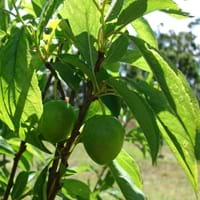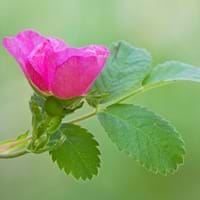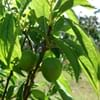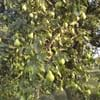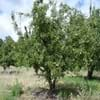Life Span
Perennial
Perennial
Type
Fruit
Flowering Plants, Ornamental Plant, Perennial
Origin
China
California, Caribbean, Mexico
Types
Prunus domestica
Not Available
Number of Varieties
Not Available
Habitat
Forest margins, Forests, Mountains, Scrubs, Valley
Chaparral, Foot Hills, Woodlands
USDA Hardiness Zone
6-10
Not Available
AHS Heat Zone
9-1
Not Available
Sunset Zone
H1, 2a, 2b, 3a, 3b, 4, 5, 6, 7, 8, 9, 10, 11, 12, 14, 15, 16, 17, 18, 19, 20, 21, 22, 23, 24
Not available
Habit
Oval or Rounded
Upright/Erect
Flower Color
White
Variety of colors
Flower Color Modifier
Bicolor
Bicolor
Fruit Color
Yellow, Red, Blue, Green, Purple
Non Fruiting Plant
Leaf Color in Spring
Green
Gray, Gray Green
Leaf Color in Summer
Green
Gray, Gray Green
Leaf Color in Fall
Green
Gray, Gray Green
Leaf Color in Winter
Light Green
Gray, Gray Green
Plant Season
Spring, Summer, Winter
Spring, Summer, Fall
Sunlight
Full Sun
Full Sun, Partial Sun
Type of Soil
Loam
Loam, Sand
The pH of Soil
Acidic, Neutral
Acidic, Neutral
Soil Drainage
Well drained
Well drained
Bloom Time
Early Spring, Late Winter
Spring, Late Spring, Early Summer, Summer, Late Summer, Early Fall, Fall
Repeat Bloomer
No
Not Available
Tolerances
Drought
Drought
Where to Plant?
Ground
Container, Ground, Pot
How to Plant?
Seedlings, stem tip cuttings
Cuttings
Plant Maintenance
Medium
Medium
Watering Requirements
Average Water Needs, Do not water frequently
Average Water Needs
In Summer
Lots of watering
Lots of watering
In Spring
Moderate
Moderate
In Winter
Average Water
Average Water
Soil pH
Acidic, Neutral
Acidic, Neutral
Soil Type
Loam
Loam, Sand
Soil Drainage Capacity
Well drained
Well drained
Sun Exposure
Full Sun
Full Sun, Partial Sun
Pruning
Remove damaged leaves, Remove dead branches, Remove dead leaves
Remove damaged leaves, Remove dead branches, Remove dead leaves
Fertilizers
All-Purpose Liquid Fertilizer, Apply N-P-K
All-Purpose Liquid Fertilizer
Pests and Diseases
Caterpillars, Crown gall, Peach Leaf Curl, Red blotch, Sap-Sucking Insects
Beetles, Black Spot, Caterpillars, Downy mildew, Mosaic viruses, Powdery mildew, Rust, Scale insects, Thripes
Plant Tolerance
Drought
Drought
Flower Petal Number
Single
Double
Edible Fruit
Yes
Not Available
Foliage Texture
Medium
Medium
Foliage Sheen
Glossy
Glossy
Invasive
No
Not Available
Self-Sowing
Yes
Not Available
Attracts
Birds
Birds, Butterflies
Aesthetic Uses
Bonsai, Borders
Showy Purposes
Beauty Benefits
Not Available
Not Available
Environmental Uses
Air purification
Air purification
Medicinal Uses
Not Available
Not Available
Part of Plant Used
Fruits, Seeds
Flowers
Other Uses
Traditional medicine, Used as a dye
Oil is used in perfume, soaps, creams, etc.
Used As Indoor Plant
No
Yes
Used As Outdoor Plant
Yes
Yes
Garden Design
Fruit / Fruit Tree, Topiary / Bonsai / Espalier
Container, Cutflower, Feature Plant, Foundation, Mixed Border, Topiary / Bonsai / Espalier
Botanical Name
PRUNUS salicina
Rosa californica
Common Name
Japanese Plum
California wildrose, California rose
In Hindi
Japanese Plum
कैलिफोर्निया गुलाब
In German
japanische Pflaumen
Kalifornische Hecken-Rose
In French
prune japonaise
Le rosier de Californie
In Spanish
ciruelo japonés
Rosa californica
In Greek
Ιαπωνικά Plum
Καλιφόρνια αυξήθηκε
In Portuguese
ameixa japonesa
California aumentou
In Polish
japoński Plum
California róży
In Latin
Plum Italica
California resurrexit
Phylum
Tracheophyta
Magnoliophyta
Class
Magnoliopsida
Magnoliopsida
Order
Aquifoliales
Rosales
Clade
Angiosperms, Eudicots, Rosids
Not Available
Tribe
Not Available
Not Available
Subfamily
Not Available
Not Available
Number of Species
Not Available
Not Available
Season and Care of Japanese Plum and California Rose
Season and care of Japanese Plum and California Rose is important to know. While considering everything about Japanese Plum and California Rose Care, growing season is an essential factor. Japanese Plum season is Spring, Summer and Winter and California Rose season is Spring, Summer and Winter. The type of soil for Japanese Plum is Loam and for California Rose is Loam, Sand while the PH of soil for Japanese Plum is Acidic, Neutral and for California Rose is Acidic, Neutral.
Japanese Plum and California Rose Physical Information
Japanese Plum and California Rose physical information is very important for comparison. Japanese Plum height is 300.00 cm and width 300.00 cm whereas California Rose height is 150.00 cm and width 150.00 cm. The color specification of Japanese Plum and California Rose are as follows:
Japanese Plum flower color: White
Japanese Plum leaf color: Green
California Rose flower color: Variety of colors
- California Rose leaf color: Gray and Gray Green
Care of Japanese Plum and California Rose
Care of Japanese Plum and California Rose include pruning, fertilizers, watering etc. Japanese Plum pruning is done Remove damaged leaves, Remove dead branches and Remove dead leaves and California Rose pruning is done Remove damaged leaves, Remove dead branches and Remove dead leaves. In summer Japanese Plum needs Lots of watering and in winter, it needs Average Water. Whereas, in summer California Rose needs Lots of watering and in winter, it needs Average Water.
